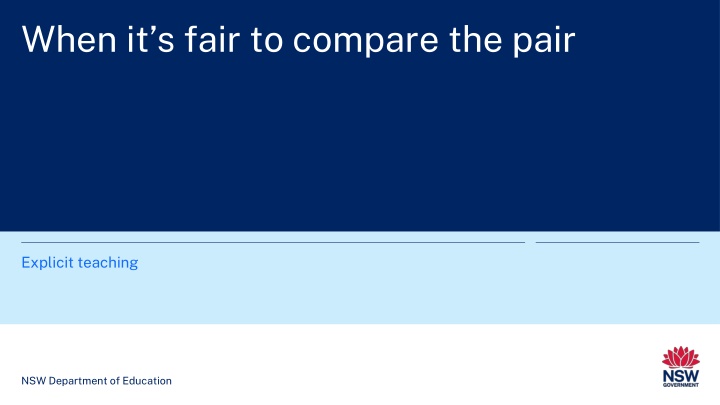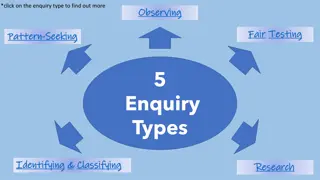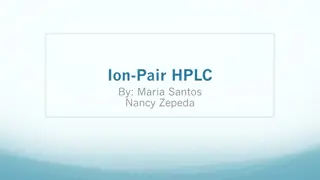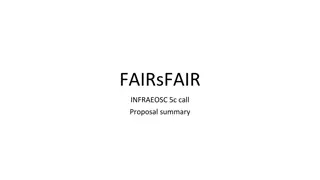When It's Fair to Compare the Pair - Exploring Different Comparison Scenarios in Education
Explore various comparison scenarios in education, from evaluating players in a sports match to comparing fractions and percentages. Understand when and how it's fair to compare different elements, such as shots taken, goals scored, and more.
Download Presentation

Please find below an Image/Link to download the presentation.
The content on the website is provided AS IS for your information and personal use only. It may not be sold, licensed, or shared on other websites without obtaining consent from the author.If you encounter any issues during the download, it is possible that the publisher has removed the file from their server.
You are allowed to download the files provided on this website for personal or commercial use, subject to the condition that they are used lawfully. All files are the property of their respective owners.
The content on the website is provided AS IS for your information and personal use only. It may not be sold, licensed, or shared on other websites without obtaining consent from the author.
E N D
Presentation Transcript
When its fair to compare the pair Explicit teaching NSW Department of Education
When it's fair to compare the pair (1) Launch Which player is best in this list?
When it's fair to compare the pair (2) Launch 2 Does knowing the number of shots each player has taken change your opinion?
When it's fair to compare the pair (3) Launch 3 Can you compare these fractions and rank the players?
When it's fair to compare the pair (4) One quantity as a percentage of another example 1 What is 24 goals as a percentage of 30 shots on goal? 24 30 100 = 80%
When it's fair to compare the pair (5) One quantity as a percentage of another prompts 1 What is 24 goals as a percentage of 30 shots on goal? 24 30 100 = 80% Why do we multiply by 100? What is the same about the 2 rectangles?
When it's fair to compare the pair (6) Your turn question 1 What is 16 goals as a percentage of 40 shots on goal?
When it's fair to compare the pair (7) Your turn solutions 1 What is 16 goals as a percentage of 40 shots on goal? 16 40 100 = 40%























